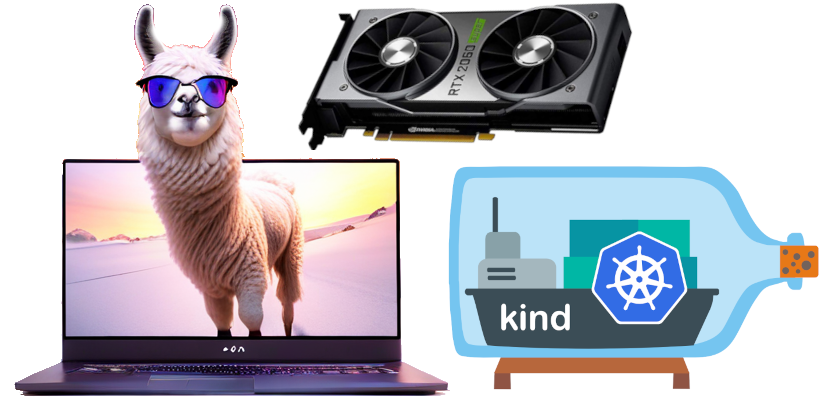Don't you just love it when you submit a PR and it turns out that no code is needed? That's exactly what happened when I tried add GPU support to Kind.
In this blog post you will learn how to configure Kind such that it can use the GPUs on your device. Credit to @klueska for the solution.
Install the NVIDIA container toolkit by following the official install docs.
Configure NVIDIA to be the default runtime for docker:
sudo nvidia-ctk runtime configure --runtime=docker --set-as-default
sudo systemctl restart docker
Set accept-nvidia-visible-devices-as-volume-mounts = true in /etc/nvidia-container-runtime/config.toml:
sudo sed -i '/accept-nvidia-visible-devices-as-volume-mounts/c\accept-nvidia-visible-devices-as-volume-mounts = true' /etc/nvidia-container-runtime/config.toml
Create a Kind Cluster:
kind create cluster --name substratus --config - <<EOF
apiVersion: kind.x-k8s.io/v1alpha4
kind: Cluster
nodes:
- role: control-plane
image: kindest/node:v1.27.3@sha256:3966ac761ae0136263ffdb6cfd4db23ef8a83cba8a463690e98317add2c9ba72
# required for GPU workaround
extraMounts:
- hostPath: /dev/null
containerPath: /var/run/nvidia-container-devices/all
EOF
Workaround for issue with missing required file /sbin/ldconfig.real:
# https://github.com/NVIDIA/nvidia-docker/issues/614#issuecomment-423991632
docker exec -ti substratus-control-plane ln -s /sbin/ldconfig /sbin/ldconfig.real
Install the K8s NVIDIA GPU operator so K8s is aware of your NVIDIA device:
helm repo add nvidia https://helm.ngc.nvidia.com/nvidia || true
helm repo update
helm install --wait --generate-name \
-n gpu-operator --create-namespace \
nvidia/gpu-operator --set driver.enabled=false
You should now have a working Kind cluster that can access your GPU. Verify it by running a simple pod:
kubectl apply -f - << EOF
apiVersion: v1
kind: Pod
metadata:
name: cuda-vectoradd
spec:
restartPolicy: OnFailure
containers:
- name: cuda-vectoradd
image: "nvcr.io/nvidia/k8s/cuda-sample:vectoradd-cuda11.7.1-ubuntu20.04"
resources:
limits:
nvidia.com/gpu: 1
EOF
